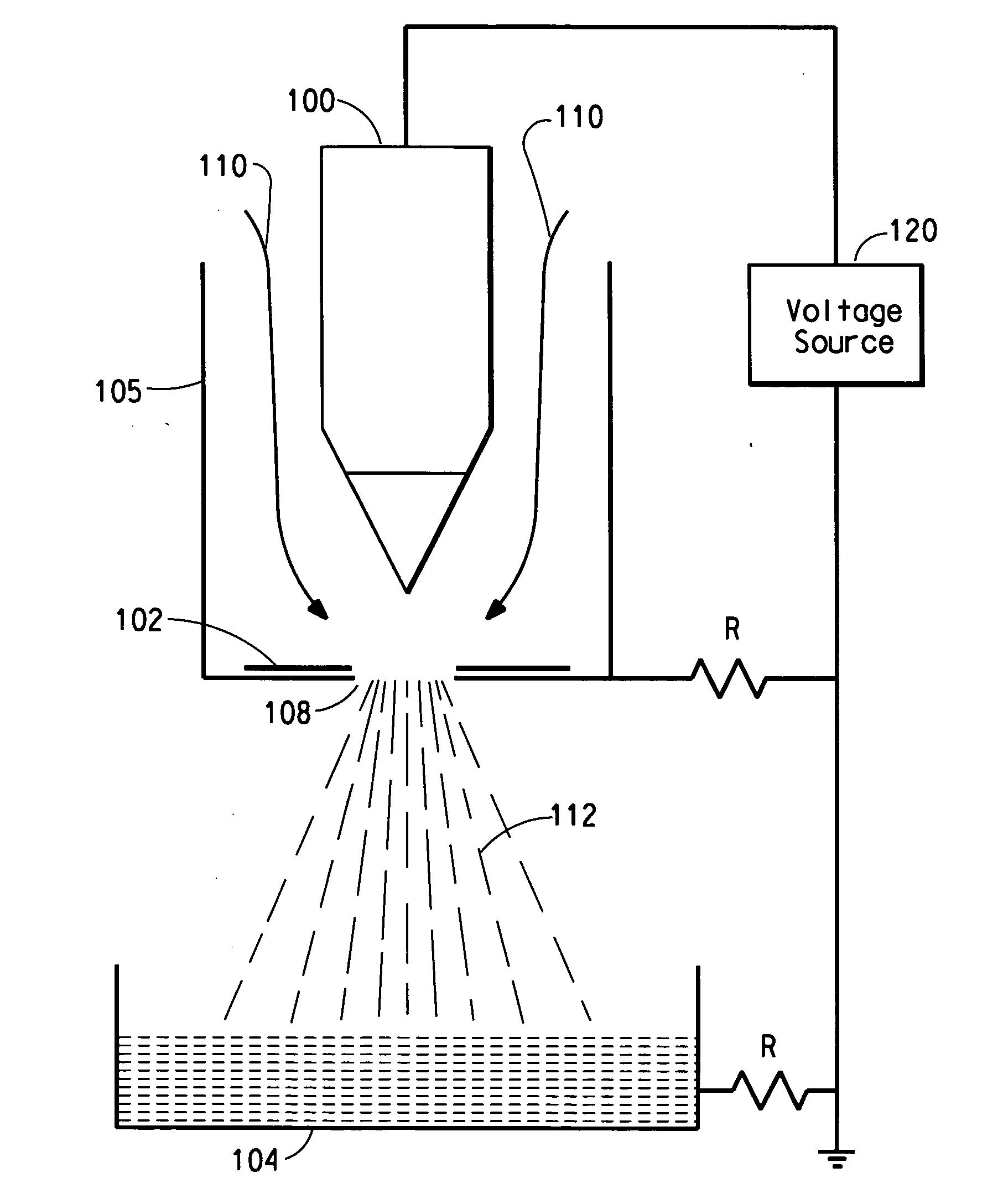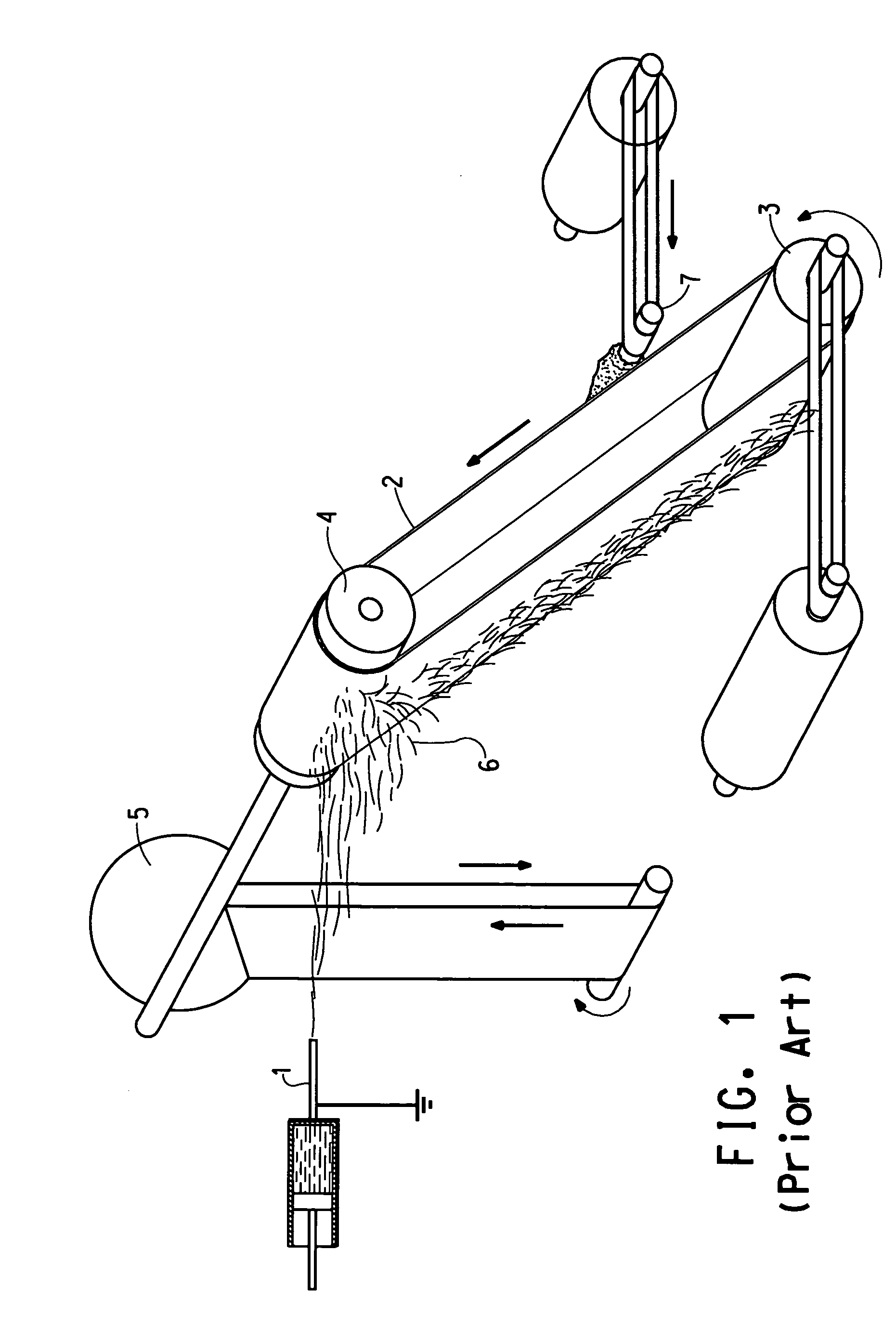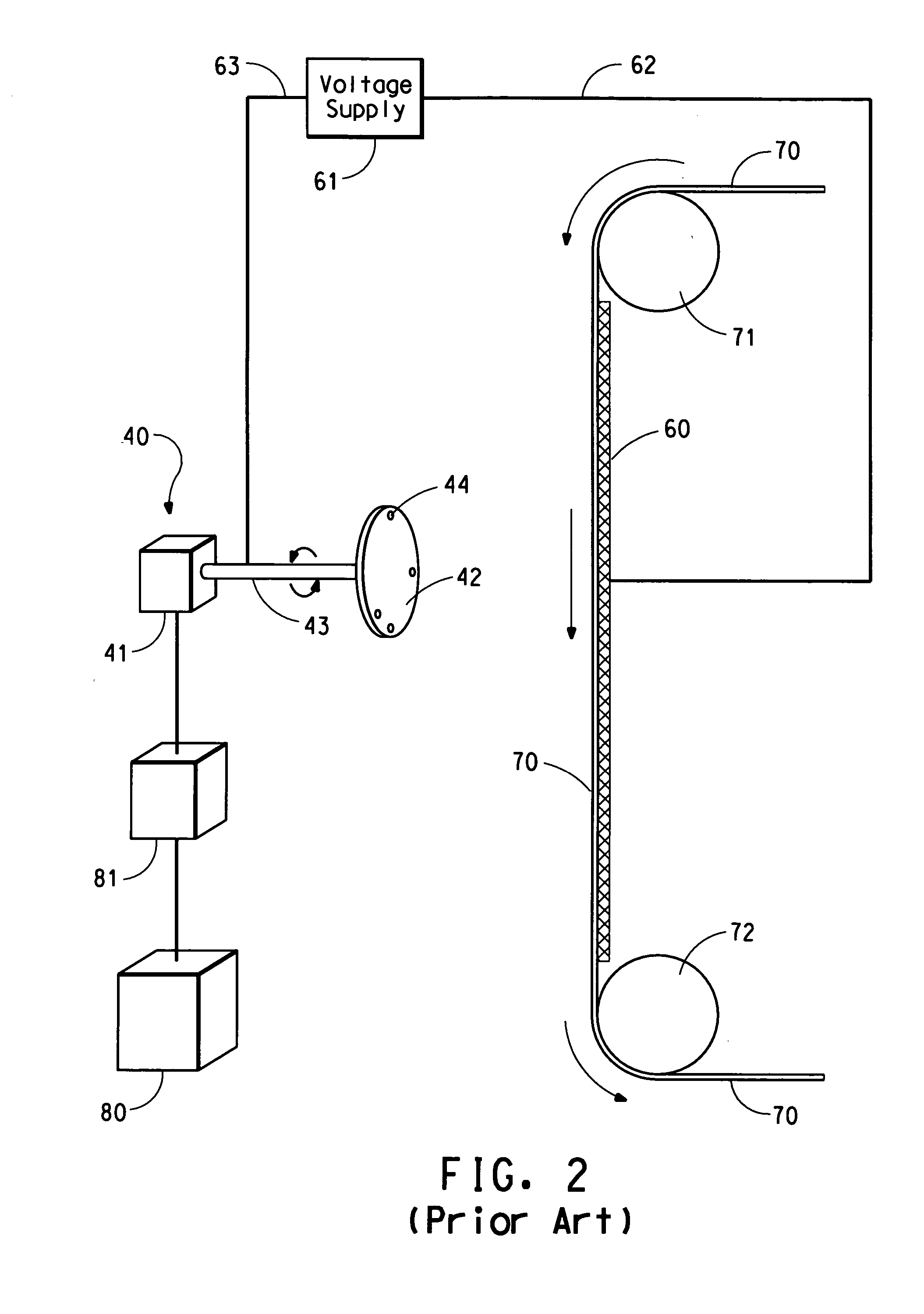Flash spun web containing sub-micron filaments and process for forming same
a technology of flash spinning and filaments, which is applied in the field of flash spinning webs, can solve the problems of less comfortable clothing, less air flow resistance, and barrier at the expense of breathability
- Summary
- Abstract
- Description
- Claims
- Application Information
AI Technical Summary
Benefits of technology
Problems solved by technology
Method used
Image
Examples
example 1
[0073] The polymer solution and parameters of Comparative Example 1 were repeated, except that the spinning temperature was 100° C., the pressure was 2.9 MPa and the flow rate was 2.4 cm3 / s and a voltage of 16 kV was applied to the emitter electrode. The resulting product was characterized by an interconnecting complex web of larger filaments which were further interconnected by complex webs of filaments having sub-micron widths as shown in FIGS. 8 and 9.
example 2
[0074] A solution of 7 wt. % Polymer B in Freon®-11 was prepared, supplied to the apparatus of FIG. 3 at a spin temperature of 105° C. and flash spun through a spin orifice having a diameter of 0.25 mm at a pressure of 2.5 MPa and a flow rate of 2.52 cm3 / s. A voltage of 16 kV was applied to the emitter electrode. The resulting product is shown in FIG. 10.
example 3
[0075] A solution of 18 wt. % Polymer C in Freon®-11 was prepared, supplied to the apparatus of FIG. 3 at a spin temperature of 101° C. and flash spun through a spin orifice having a diameter of 0.25 mm at a pressure of 2.5 MPa and a flow rate of 2.49 cm3 / s. A voltage of 14 kV was applied to the emitter electrode. The resulting product had no nanofibers and is shown in FIG. 11.
PUM
| Property | Measurement | Unit |
|---|---|---|
| Length | aaaaa | aaaaa |
| Length | aaaaa | aaaaa |
| Pore size | aaaaa | aaaaa |
Abstract
Description
Claims
Application Information
 Login to View More
Login to View More - R&D
- Intellectual Property
- Life Sciences
- Materials
- Tech Scout
- Unparalleled Data Quality
- Higher Quality Content
- 60% Fewer Hallucinations
Browse by: Latest US Patents, China's latest patents, Technical Efficacy Thesaurus, Application Domain, Technology Topic, Popular Technical Reports.
© 2025 PatSnap. All rights reserved.Legal|Privacy policy|Modern Slavery Act Transparency Statement|Sitemap|About US| Contact US: help@patsnap.com



